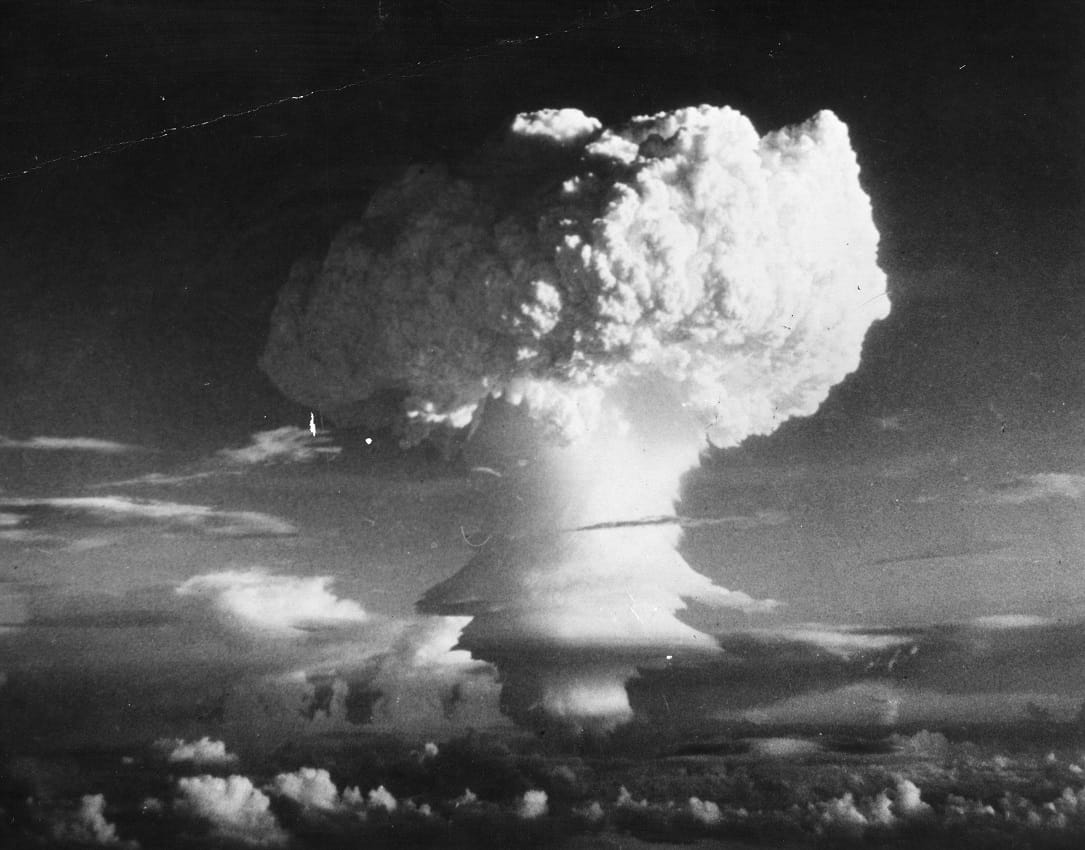
The Cuban Missile Crisis essay
In this paper we are going to discuss the Cuban missile crisis, its causes, participants and consequences. Perhaps never before has the whole world been so close to the beginning of the nuclear war, as during the Cuban missile crisis in 1962. October 27, 1962 was the day on which the “nuclear Bow” was stretched to the limit and the string was about to fall.
But before we talk about the Cuban missile crisis, we should return to some events of the era of the “cold war”. Otherwise, it will be impossible to understand the sources of the crisis and in particular the psychological background on which the conflict was developing, to understand how Khrushchev could have decided to establish the nuclear missiles in Cuba, and how he could have decided to take them out back. Cuban epopee was, in general, a quite logical result of the development of Soviet-American relations during the thaw. Like a flash of lightning, it has highlighted the whole futility of the preceding fusion contest, the whole danger of the old policy, and indisputably pointed to the need for radical change in relations between the two nuclear giants.
In just three years before a revolutionary government was established in Cuba headed by Fidel Castro Ruz. And although the U.S. administration was a little sympathetic to his predecessor – the dictator Batista, however, it met the victory of the Cuban revolutionaries with hostility. May be the Americans were suspicious of the new government requirement to leave the military base of Guantanamo, and even the attempts to block it. Perhaps the U.S. government has too listened to the Cuban exiles who have created a strong anti-Castro lobby at the Florida. Perhaps the speech by Fidel Castro, who from the very beginning was seaking to abolish the American dominance on the island…
It is hard to say what the cause was. But, any way, Washington almost on the second day of the victory of Castro embarked on the path of an active confrontation with his government.
In 1960, Americans stopped buying Cuban sugar and thereby put the country on the brink of economic disaster, and January 2, 1961 The United States has completely stopped diplomatic relations with Cuba.
At that time Fidel Castro was neither a Communist nor a Marxist. And the Americans by their misguided policies pushed him down a path of rapprochement with the Soviet Union. He needed a support – economic, political, armed support, and he found it all in Moscow.
In February 1960, Mikoyan, a soviet politician, visited Cuba. And in May of that year, the diplomatic relations were established between Cuba and the USSR. In April 1961, the Americans backed Cuban exiles landing operation against Cuba (Glover, 2000). On its south coast near Playa Larga and Playa Giron in the Bay of Pigs there was a fierce battle between the forces of Fidel Castro and the paratroopers. The fightings were going for 72 hours. Ultimately, the landing was not only defeated, much of the immigrants were taken prisoners. The Cubans seized a large quantity of arms, on which there was an American brand.
According to Glover, Robert Kennedy, in his memoirs of the Caribbean crisis – “13 Days” – notes that John Kennedy did not hesitate for a long time whether to support the anti-Castro operation planned before him (Glover, 2000). The defeat in the Bay of Pigs heated up to a limit the anti-Cuban sentiments in America.
In Congress and in the press there were calls for a direct invasion on Cuba. Cuban leaders held a series of major military actions in the event of another attack. Simultaneously, a rapid development of the Cuban-Soviet relations began. This was facilitated by important changes in Cuba. Castro was elected the First Secretary of the National Leadership of the United Revolutionary Organizations. The Soviet Union has decided to provide an economic assistance to Cuba, primarily by the purchases of Cuban sugar.
In August 1962, an agreement was signed on the supply of arms to Cuba. Cuba was preparing to defend itself in the case of a new counter-invasion or a direct military action of some countries in Central America, finally, the intervention of the United States.
Looking ahead, we’ll talk about a very interesting dialogue that took place at a conference on the Cuban missile crisis in January 1989 in Moscow, between a member of the Politburo of the Communist Party of Cuba Risket and the former Minister of the United States McNamara. Brenner stated that Risket said that the Cuban leadership was absolutely confident in the inevitability of a new intervention against Cuba, which in one form or another would be supported by the United States (Brenner, 1990). This explains the continuing care of Fidel Castro not only about the creating a strong army, but about its arms, and training militia. McNamara, for his part solemnly assured that the administration of John F. Kennedy never had plans to attack Cuba. However, Kennedy was very concerned about the deployment of Fidel Castro guerrilla movements in Central and South America.
The Cuban leadership has never raised the issue of accommodation of missiles with nuclear warheads on the island. It understood well the risk for the Cuban people associated with such placement.
The idea and the initiative of placing missiles came from Khrushchev himself. In a letter of Khrushchev to Fidel Castro, Khrushchev openly and frankly talked about how the thought about missiles in Cuba came to his mind (Taubman, 2003). It happened in Bulgaria, apparently in Varna. Khrushchev and the Soviet Defense Minister of that time Malinovsky strolled along the shore of the Black Sea. And Malinovsky said Khrushchev, pointing to the sea: on the other side, in Turkey, there is an American nuclear missile base (Taubman, 2003). The rockets fired from the base may, within six or seven minutes destroy the major centers of Ukraine and Russia, located on the south, including Kiev, Kharkov, Chernigov, Krasnodar, not to mention the Sevastopol – an important naval base in the Soviet Union.
Khrushchev asked Malinovsky then: why the Soviet Union had no right to do what America made. Why not, for example, to place Soviet missiles in Cuba? America surrounded the Soviet Union with the bases from all the sides and kept it in ticks. Meanwhile, the Soviet missiles and nuclear bombs were located only in the USSR. It turns a double inequality. Inequality of amount and time of delivery.
So, he decided and discussed this operation first with Malinovsky, and then – with a broader group of leaders, and finally obtained the consent of the Presidium of the CPSU Central Committee.(Taubman, 2003)
It was not clear whether the Cuban leadership would agree with the Soviet proposal. To solve the issue a delegation was addressed to Cuba, which included Marshall Biryuzov, the future Ambassador to Cuba Alekseev and other Soviet military and political leaders. They thought that it would be difficult to explain Fidel Castro. However, the response of the Cuban leaders has exceeded the expectations of Khrushchev.
Castro put the question to the discussion of the Cuban leadership, and the unanimous decision was made – to accept the deployment of missiles with nuclear weapons. At the same time the main motivation for the Cubans was not the defense of Cuba, but the strengthening of the defensive power of the whole socialist camp.
What were the goals set by Khrushchev? He gave himself – strongly and persistently – one and only one explanation: the strengthening of defense capabilities of Cuba, guarantees to protect it from invasion – indirect or direct – of the United States of America.
It is possible to doubt this explanation. Placing missiles in Cuba pursued, at least two purposes. Khrushchev insisted on one of them – the protection of Cuba. However such a statement may be questioned, because the Cubans themselves did not ask such form of protection. On the contrary, they had confidence that they had given consent to the deployment of missiles not in their interests, but to strengthen the defense of the USSR and other socialist countries (Brenner, 1990). For Cubans, like for all the others, it was clear that the establishment of a nuclear missile base on the island, located just ninety miles from the United States, greatly increased the risk of the U.S. invasion.
It seems that going to take that risk, Khrushchev, at the same time, pursued a different goal. Namely – to change the strategic balance of power between the USSR and the USA. To give the United States an opportunity to feel what the Soviet people were experiencing during the “cold war”, being surrounded on all sides by the
United States bases, to demonstrate the Soviet power and create the conditions, if not military, then of political parity. Of course, Khrushchev was not going even in his mind to launch a nuclear strike on the United States. Not to mention the fact that it was absolutely inconsistent with the purposes of his policies, his character, he was well aware that the United States retaliation would be able to destroy the Soviet Union and destroy more than half of its population.
It goes without saying that Khrushchev was entirely different in mind: to achieve the conditions of new negotiations with the United States, to create an equal opportunity to achieve a compromise. In such way he wanted to get what he had been aspiring for years 1960-1962: the recognition of the GDR, securing the new status of West Berlin’s postwar borders, as well as major changes in the Soviet-American relations on the basis of detente and arms limitation.
From late July to mid September the Soviet Union sent to Cuba about 100 ships. Most of them transported weapons that time. According to American estimates, there were delivered 42 ballistic missile medium-range installation – MRBM, 12 ballistic missile systems of intermediate type, 42 fighter bomber type Il-28, 144 anti-aircraft guns such as “surface-to-air”; other types of missiles, missile-armed patrol boats to Cuba. Also – this has been recently cleared – about 40,000 Soviet soldiers and officers had been moved to Cuba (Taubman, 2003).
Of course, this movement could not remain unnoticed by the Americans. The hope to keep everything in secret, privacy, until the installation of missiles, was a Khrushchev’s advisers blunder and his own one. October 16, Americans got good data on the deployment of Soviet installations in Cuba. This data were brought by the reconnaissance aircraft U-2. But even before the U.S. intelligence received information from its agents in Cuba on the movements of Soviet missiles on the island, accompanied by Soviet soldiers and officers, dressed in Cuban military uniforms or civilian clothes. The same day, all these data have been reported to the President Kennedy.
The end of the Cuban crisis, perhaps was more profitable for the Soviet Union. They have achieved the withdrawal of missiles from Turkey and reaffirmed the strategic parity between the two great powers. However, for Khrushchev personally, this crisis did not go good. It showed his mistakes, ill-considered strategic decisions, political short-sightedness. It was Khrushchev who had pushed the world to the nuclear war, but that was to his credit that he had saved it. He has been criticized both by the fraternal parties and from the party comrades for capitulatory solution, but now we clearly understand that he was right. At that time the world was saved by the double-sided reluctance of war. The fear of nuclear war was stronger than one’s own desires both of one side and the other.
In conclusion, it is possible to state that the Cuban Missile Crisis was for humanity the same bitter, but useful lesson, as Hiroshima and Nagasaki. Then tens of thousands were killed, but the world saw the horror of nuclear war, and their death had saved millions in the future.

